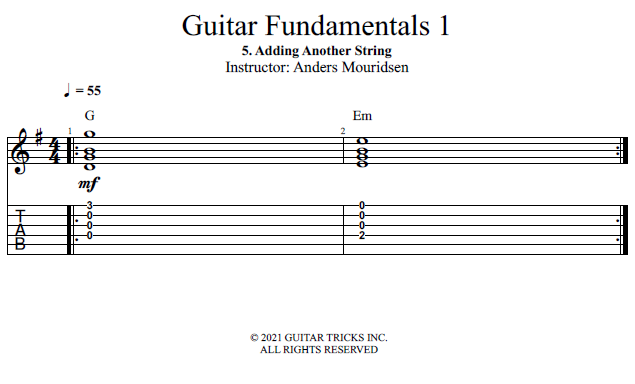Adding Another String
Now let's try adding one more string to both of the chords, to make them a little bit fuller sounding.
We'll add the 2nd fret of the D-string. I'm fretting this note with my middle finger, but you should also try it with your index finger and see which one you prefer.
Now you'll see why it's important that your fingertip is coming in at a straight angle. This is the very common mistake, where the finger is hitting the fretboard at an angle and therefore laying down and muting the strings below it. So try to raise up that fingertip!
Sometimes it's helpful to move your thumb on the back of the neck a little closer to the floor, which moves the fingers away from the fretboard.

Instructor
Anders Mouridsen
- Styles:
- Any Style
- Difficulty:
-
